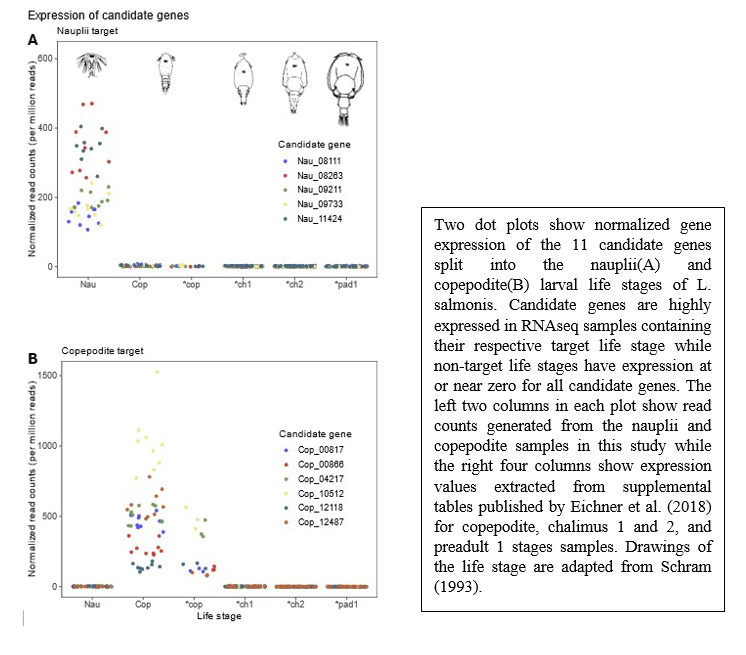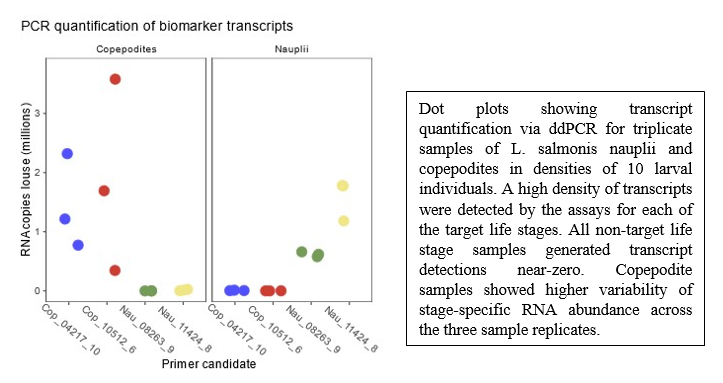MINING Lepeophtheirus salmonis TRANSCRIPTOMES UNEARTHS KEYS TO STAGE-SPECIFIC QUNTIFICATION OF PARASITIC LARVAE
Abstract
The salmon louse, Lepeophtheirus salmonis, is an ectoparasitic copepod which has devastating effects on both wild and farmed salmonids in the North Atlantic region. To better assess risk to wild salmonid populations there is an urgent need to individually quantify the different planktonic life stages of L. salmonis . Current molecular methods show great promise reliably identifying and counting L. salmonis individuals but are unable to discern between the infective and non-infective larval stage. In the present study, comparative transcriptomics of nauplii and copepodid larval stages was used to identify transcript candidates for stage-specific quantification of L. salmonis larvae. We demonstrate that approximately two thirds of the L. salmonis transcriptome is differentially expressed between the two planktonic life stages. We present 11 candidate quantitative PCR assays targeting RNA transcripts expressed solely in one of these two life stages, of which four were tested in vitro . All four candidates successfully amplified target life stage RNAs with high detection rates, of which three also showed capability as assays for separating the life stages of L. salmonis and measuring their densities using quantitative PCR. Applying these assays to well established eDNA collection and processing pipelines could pave the way to significantly upscale lice monitoring practices in regions with high infestation pressure or at-risk salmonid populations.




